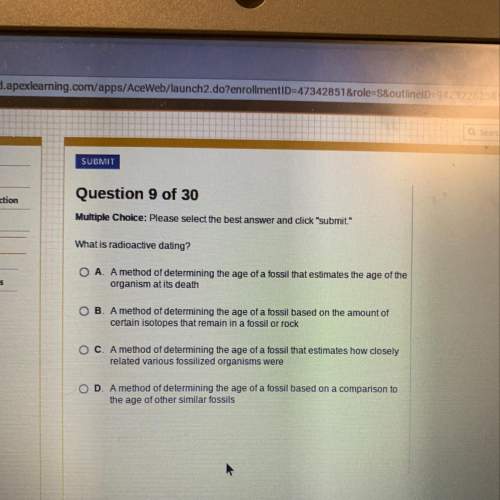
Genetic variation in bacterial populations can result from all of the following EXCEPT (2 points)
conjugation
meiosis
mutations
transduction
2.
The figure below depicts changes in the DNA content of a recipient cell engaged in conjugation with an Hfr cell. Hfr cell DNA begins entering the cell at Time A. A fragment of the recipient's chromosome is replaced with a homologous fragment from the Hfr cell's DNA.
A line graph shows the amount of DNA present in the recipient cell vs. time. The amount of DNA increases at time A, increasing steadily till it reaches its maximum value just before time C. At time C, the amount of DNA drops significantly, falling back to an amount equal to the starting amount at time A. The amount of DNA content remains constant from time C to D.
© 2012 FLVS
How is the recipient cell different at Time D than it was at Time A? (2 points)
It has a different sequence of base pairs.
It has a greater number of genes.
It has a lower mass of DNA.
It contains bacteriophage DNA.
3.
How does sexual reproduction compare to DNA transfers in prokaryotes? (2 points)
Both increase genetic diversity.
Sexual reproduction results in greater evolutionary change.
DNA transfer in prokaryotes allows for fewer errors and mutations.
I only
I and II
I and III
I, II, and III
4.
Two eukaryotic proteins have one domain in common but are otherwise very different. Which of the following processes is the most likely to have contributed to this similarity? (2 points)
exon shuffling
gene duplication
histone modifications
random point mutations
5.
This figure shows a diagram of genes on human chromosome 16 and the locations of blocks of similar genes on four chromosomes of a mouse:
The genes that are found on human chromosome 16 are found separately on four different chromosomes in a mouse.
The movement of these blocks suggests that over the course of evolution, these sequences have separated and returned to their original positions
chromosomal translocations have moved blocks of DNA sequences to other chromosomes
the DNA sequences within these blocks have become increasingly divergent over evolutionary time
higher mammals have more convergence of gene sequences that are related to each other in function
6.
Describe the three main mechanisms of DNA transfer from one bacterial cell to another and explain what distinguishes each from the others. (5 points)

Answers: 1


Another question on Biology

Biology, 21.06.2019 21:30
Which sentence is an example of a strong conclusion to an autobiography? a. i stayed after school three days in a row to practice onstage in the auditorium. b. i knew i would have to practice all week to memorize my dance for the recital. c. after the recital was over, i knew practicing was worth it, and i was looking forward to my next big challenge. d. on opening night, i danced in front of a packed auditorium.
Answers: 2

Biology, 22.06.2019 00:40
World class speed skaters can skate a 3,000-m course in about 4 minutes. what is their average speed for this course. a. 12.5m/s b. 1.33m/s c. 13.3m/s d. 1.25m/s
Answers: 3

Biology, 22.06.2019 05:30
Food webs - transferring energy and matter from one level to another. here you see four food webs. one or more are incorrect. which food web(s) show the correct sequence of organisms, from start to top level consumer? a) a b) d c) c d) a and d
Answers: 2

Biology, 22.06.2019 21:40
According to the rna world hypothesis, rna acted as the genetic material and catalyzed reactions in ancient cells. what conclusion can you draw from this? a. this implies that dna and proteins aren't essential in cells today. b. this implies that rna can catalyze any chemical reaction that enzymes catalyze. c. this implies that if a cell has a problem with its dna, its rna can compensate for the damaged dna. d. this implies that dna and proteins evolved after rna.
Answers: 2
You know the right answer?
Genetic variation in bacterial populations can result from all of the following EXCEPT (2 points)...
Questions

World Languages, 25.07.2019 06:30

Computers and Technology, 25.07.2019 06:30





Mathematics, 25.07.2019 06:30

Biology, 25.07.2019 06:30

Mathematics, 25.07.2019 06:30

Social Studies, 25.07.2019 06:30






Chemistry, 25.07.2019 06:30

Computers and Technology, 25.07.2019 06:30

Health, 25.07.2019 06:30

English, 25.07.2019 06:30

Health, 25.07.2019 06:30




